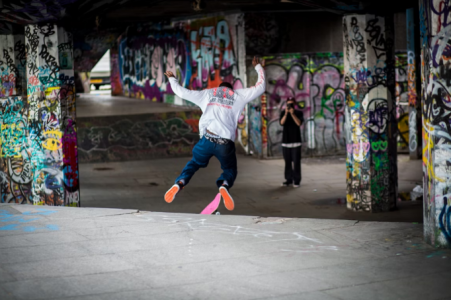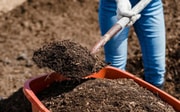What you do right after a fall can prevent serious complications—ER doctors explain
- Replies 0
Falling isn't just something that happens to older adults—it can happen to anyone, anywhere, and at any time.
While the risks increase with age, emergency room doctors say it's important for people of all ages to take falls seriously.
Ignoring symptoms or brushing off the impact can lead to infections, mobility loss, or long-term complications.
Knowing exactly what to do after a fall could help you avoid a visit to the emergency room or something far worse.
The first step, according to ER doctors, is a head-to-toe injury assessment before even attempting to get up.
Dr. Joe Whittington emphasizes checking for pain in the head, spine, and joints and warns that missed injuries can lead to further harm.
ER physician Dr. Jordan Wagner adds that if any sharp pain, numbness, or swelling is detected, you should remain still and call for help.
Moving too quickly after a fall could worsen fractures or internal injuries you didn’t even know you had.

Sudden movements can also mask or aggravate hidden damage, like a concussion or internal bleeding.
“If you feel dizzy, nauseous or in significant pain, stay still and call for help,” Whittington says. Head injuries are especially serious, as symptoms like headaches or confusion may be delayed and difficult to detect.
Wagner stresses that “brain bleeds, in particular, can be life-threatening and often develop at different rates,” making early evaluation critical.
People taking blood thinners face added risk from head trauma, even if they feel fine at first. Former ER doctor Dr. Jessica Singh says these medications can “increase the risk of potentially life-threatening bleeding,” especially in cases where someone hits their head.
Immediate medical care is also recommended for anyone who experiences lingering pain, confusion, or dizziness following a fall.
Don’t assume you're fine just because you can still move around or speak clearly. If no serious injuries are apparent, some symptoms can be managed at home with care and caution.
Wagner advises using ice on sore spots to minimize swelling and inflammation and says, “Don’t try to tough it out.”
Whittington recommends elevating any injured limbs, particularly knees or ankles, to help with recovery. Both stress that minor injuries, when left untreated, can turn into bigger issues if ignored or aggravated.
After addressing the injury, it’s crucial to understand what caused the fall in the first place. Singh urges people to consider whether environmental factors, medical conditions, or even distractions played a role.
“What other external factors, including medications, alcohol or substance use, may have contributed to the fall?” she asks.
Reflecting on both the immediate situation and broader health issues can help prevent it from happening again.
Removing fall hazards in your home is a preventative step that should not be overlooked. Wagner advises keeping high-traffic areas clutter-free and eliminating tripping hazards like loose rugs, cords, and dim lighting.
Whittington adds that poor visibility is often to blame and suggests installing brighter bulbs or night lights in hallways and bathrooms.
Singh notes that tools like grab bars, reachers, and fall alarms are especially helpful for older adults or those with mobility limitations.
Many people reduce their activity after a fall out of fear, but ER doctors say that’s the wrong move. “Immobility is associated with deconditioning and greater fall risk,” Singh warns, adding that fear itself can lead to more accidents.
Whittington says exercises like yoga or tai chi can help improve balance and coordination, reducing the chance of another fall. Regular movement keeps your muscles engaged and your reflexes sharp, both key to preventing future injury.
Read next:

Have you or someone close to you experienced a fall that could’ve been prevented? Share your story in the comments—your experience might help someone else stay safer in the future.
While the risks increase with age, emergency room doctors say it's important for people of all ages to take falls seriously.
Ignoring symptoms or brushing off the impact can lead to infections, mobility loss, or long-term complications.
Knowing exactly what to do after a fall could help you avoid a visit to the emergency room or something far worse.
The first step, according to ER doctors, is a head-to-toe injury assessment before even attempting to get up.
Dr. Joe Whittington emphasizes checking for pain in the head, spine, and joints and warns that missed injuries can lead to further harm.
ER physician Dr. Jordan Wagner adds that if any sharp pain, numbness, or swelling is detected, you should remain still and call for help.
Moving too quickly after a fall could worsen fractures or internal injuries you didn’t even know you had.

After a fall? Doctors say this crucial step applies to all ages. Image source: Dave George / Unsplash
Sudden movements can also mask or aggravate hidden damage, like a concussion or internal bleeding.
“If you feel dizzy, nauseous or in significant pain, stay still and call for help,” Whittington says. Head injuries are especially serious, as symptoms like headaches or confusion may be delayed and difficult to detect.
Wagner stresses that “brain bleeds, in particular, can be life-threatening and often develop at different rates,” making early evaluation critical.
People taking blood thinners face added risk from head trauma, even if they feel fine at first. Former ER doctor Dr. Jessica Singh says these medications can “increase the risk of potentially life-threatening bleeding,” especially in cases where someone hits their head.
Immediate medical care is also recommended for anyone who experiences lingering pain, confusion, or dizziness following a fall.
Don’t assume you're fine just because you can still move around or speak clearly. If no serious injuries are apparent, some symptoms can be managed at home with care and caution.
Wagner advises using ice on sore spots to minimize swelling and inflammation and says, “Don’t try to tough it out.”
Whittington recommends elevating any injured limbs, particularly knees or ankles, to help with recovery. Both stress that minor injuries, when left untreated, can turn into bigger issues if ignored or aggravated.
After addressing the injury, it’s crucial to understand what caused the fall in the first place. Singh urges people to consider whether environmental factors, medical conditions, or even distractions played a role.
“What other external factors, including medications, alcohol or substance use, may have contributed to the fall?” she asks.
Reflecting on both the immediate situation and broader health issues can help prevent it from happening again.
Removing fall hazards in your home is a preventative step that should not be overlooked. Wagner advises keeping high-traffic areas clutter-free and eliminating tripping hazards like loose rugs, cords, and dim lighting.
Whittington adds that poor visibility is often to blame and suggests installing brighter bulbs or night lights in hallways and bathrooms.
Singh notes that tools like grab bars, reachers, and fall alarms are especially helpful for older adults or those with mobility limitations.
Many people reduce their activity after a fall out of fear, but ER doctors say that’s the wrong move. “Immobility is associated with deconditioning and greater fall risk,” Singh warns, adding that fear itself can lead to more accidents.
Whittington says exercises like yoga or tai chi can help improve balance and coordination, reducing the chance of another fall. Regular movement keeps your muscles engaged and your reflexes sharp, both key to preventing future injury.
Read next:
- You won’t believe how this 75-year-old woman survived alone for 14 hours after a terrifying accident
- The simple tweak that could make your workouts even better for your heart
Key Takeaways
- Falls are a leading cause of ER visits and serious injury among older adults, but doctors say people of all ages need to take them seriously.
- After a fall, it’s crucial to check for head trauma, joint injuries, or internal symptoms before attempting to get up.
- Factors such as blood thinners or previous health conditions can increase the risk of severe complications following even a minor accident.
- Simple home adjustments and regular physical activity can significantly reduce the likelihood of falling again.






